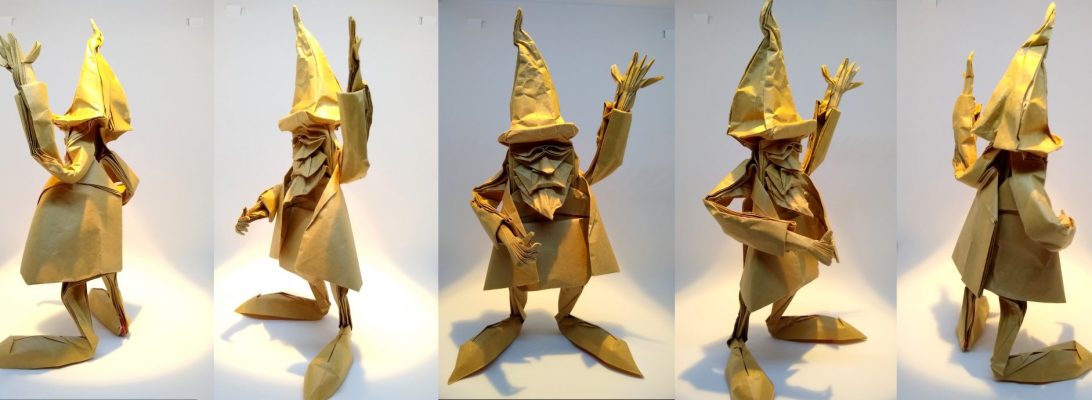I wish I remember where I found the “short” describing the unit folding for this lovely “sunflower ball”:

At the time, I practiced and learned the unit, modified it a little (removing the colour-change spiral) and then, a few weeks later decided to fold the whole thing. As I made progress in construction I realised I had NO IDEA whose design it was.
I turned to one of the many online origami communities I am a member of, and posted progress shots – fortunately it was identified as “Kamillen” designed by Irina Krivyakina.
I decided to hide the part colour change flap that causes a central spiral on each face, because I loved the shape of the geometry and thought the spiral detracted from it (my opinion only – I … have regrets).
Folded from 30 units, I decided to fold some of the 7.5cm square kami I have loads of … and … if I was to fold it again I would go bigger. The units have a lovely crenellated face, the tab-pocket mechanism is very fiddly but, when locked correctly, really positive.
Continue reading


